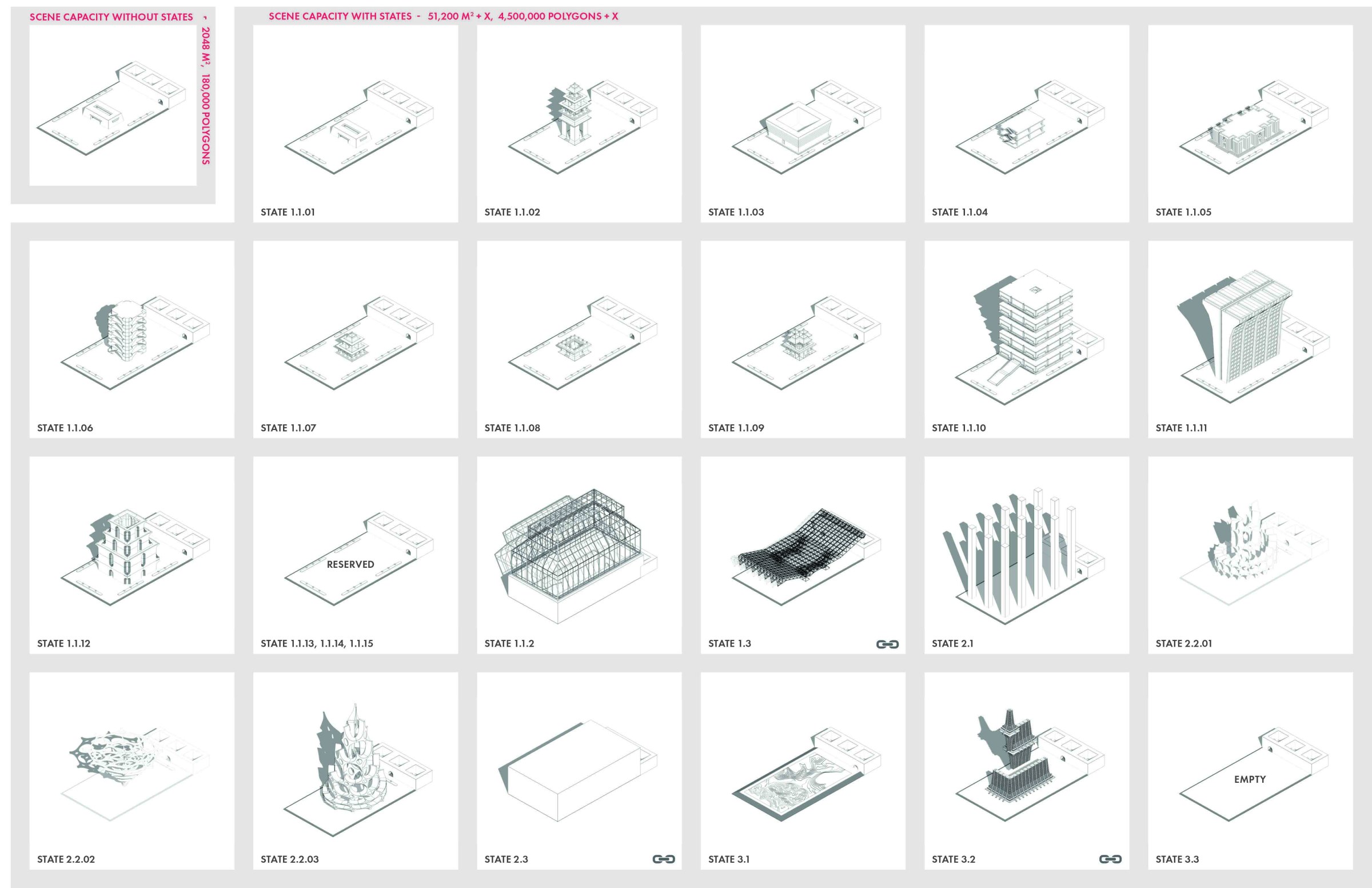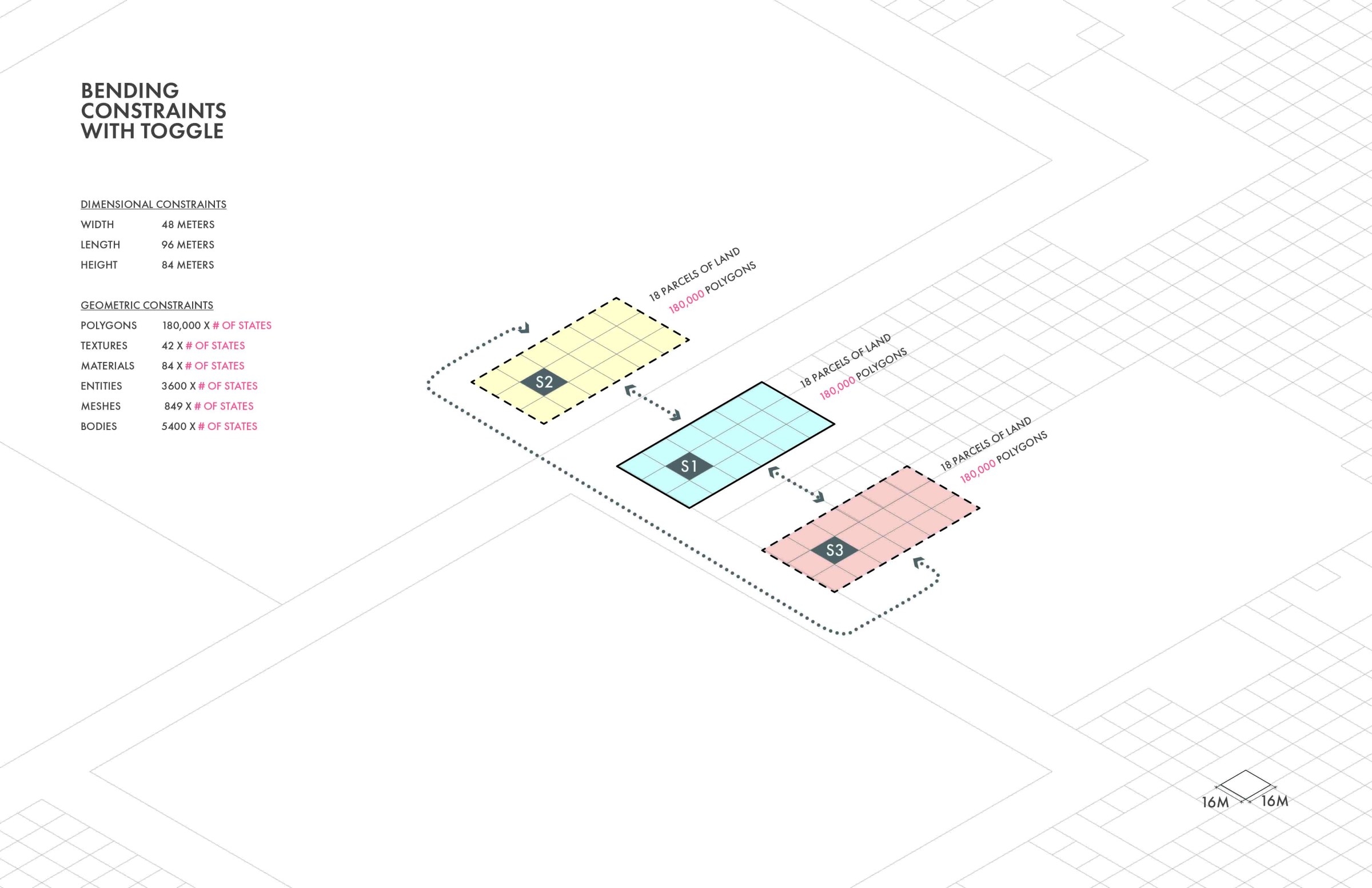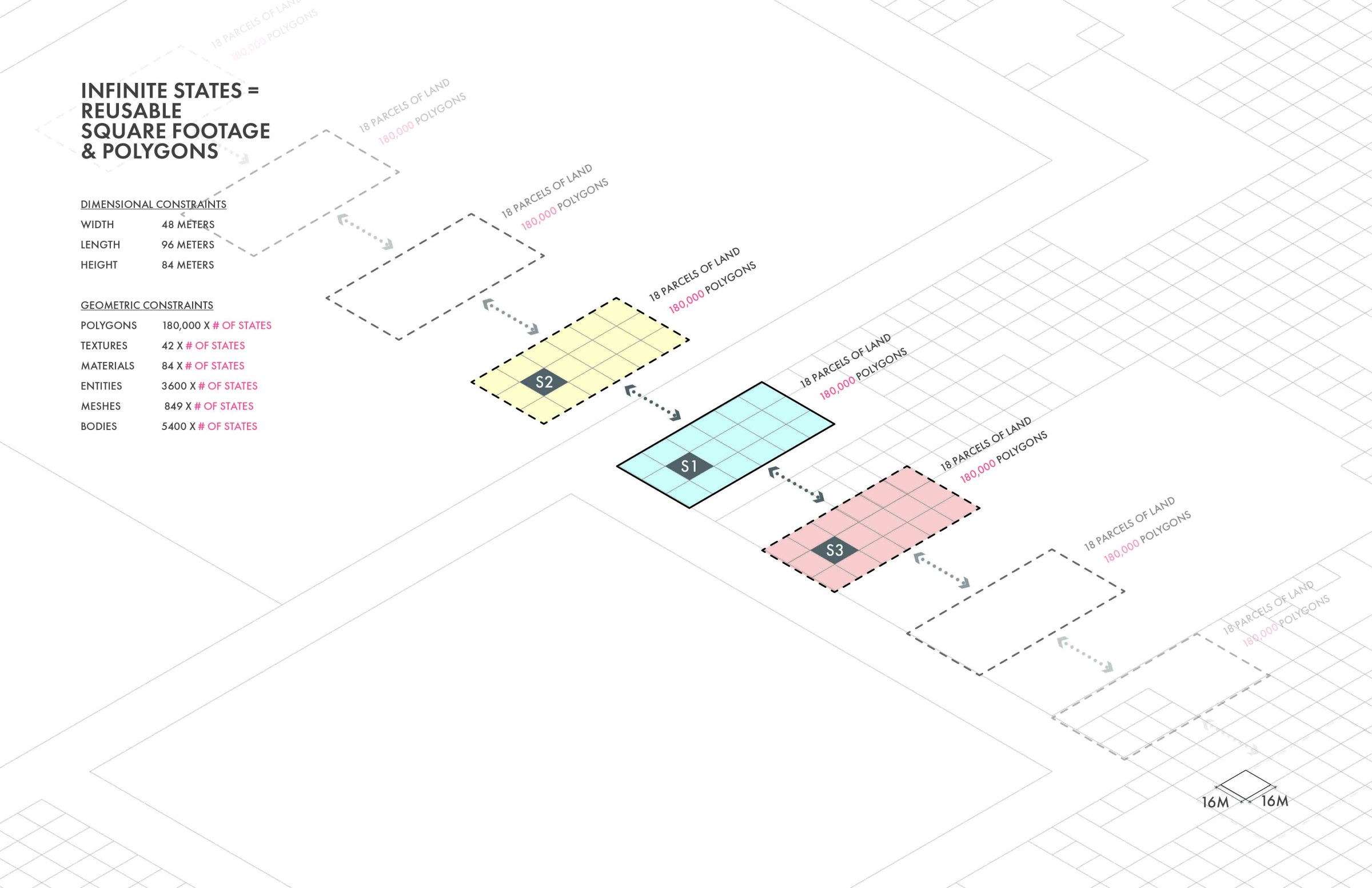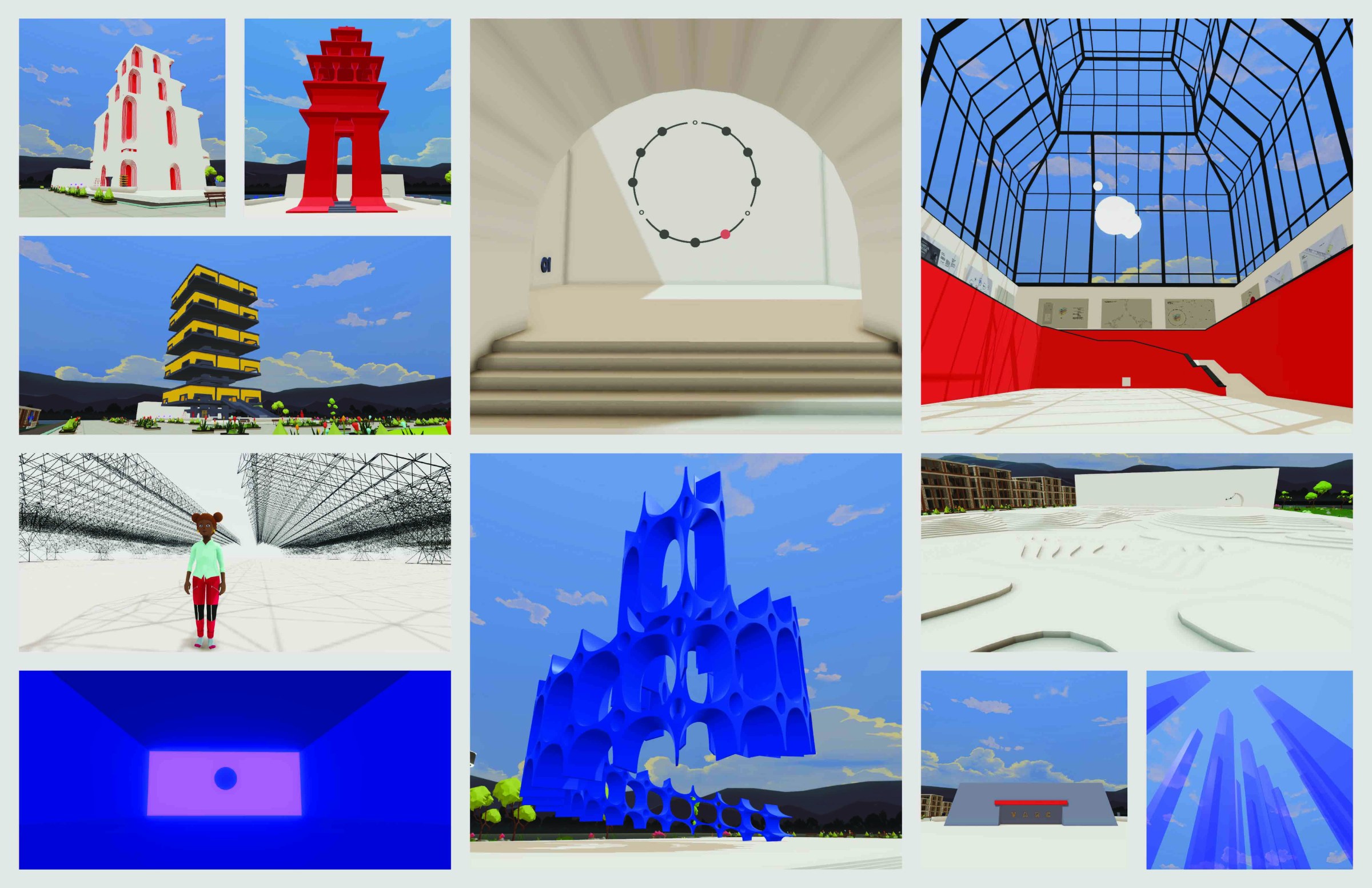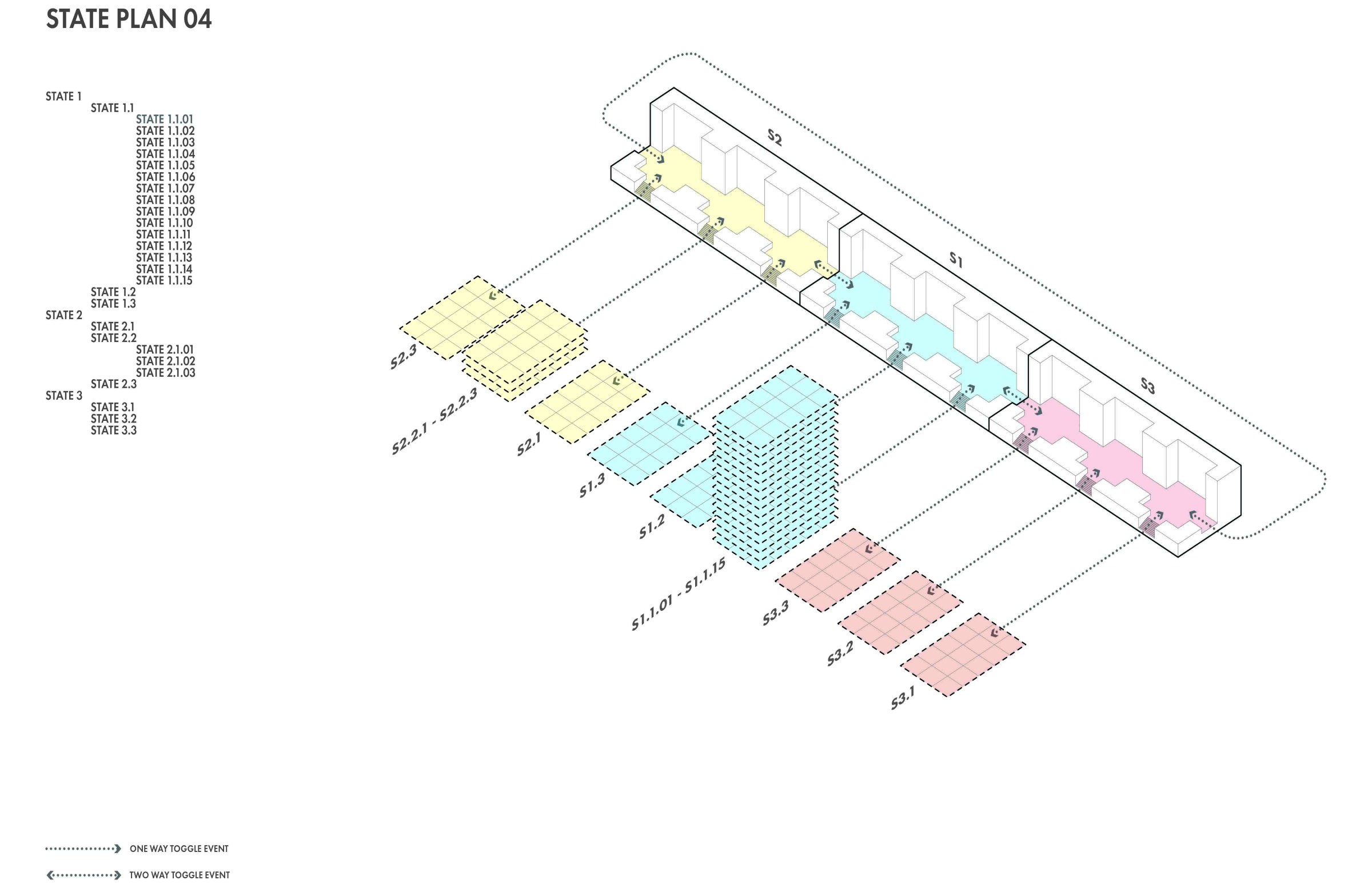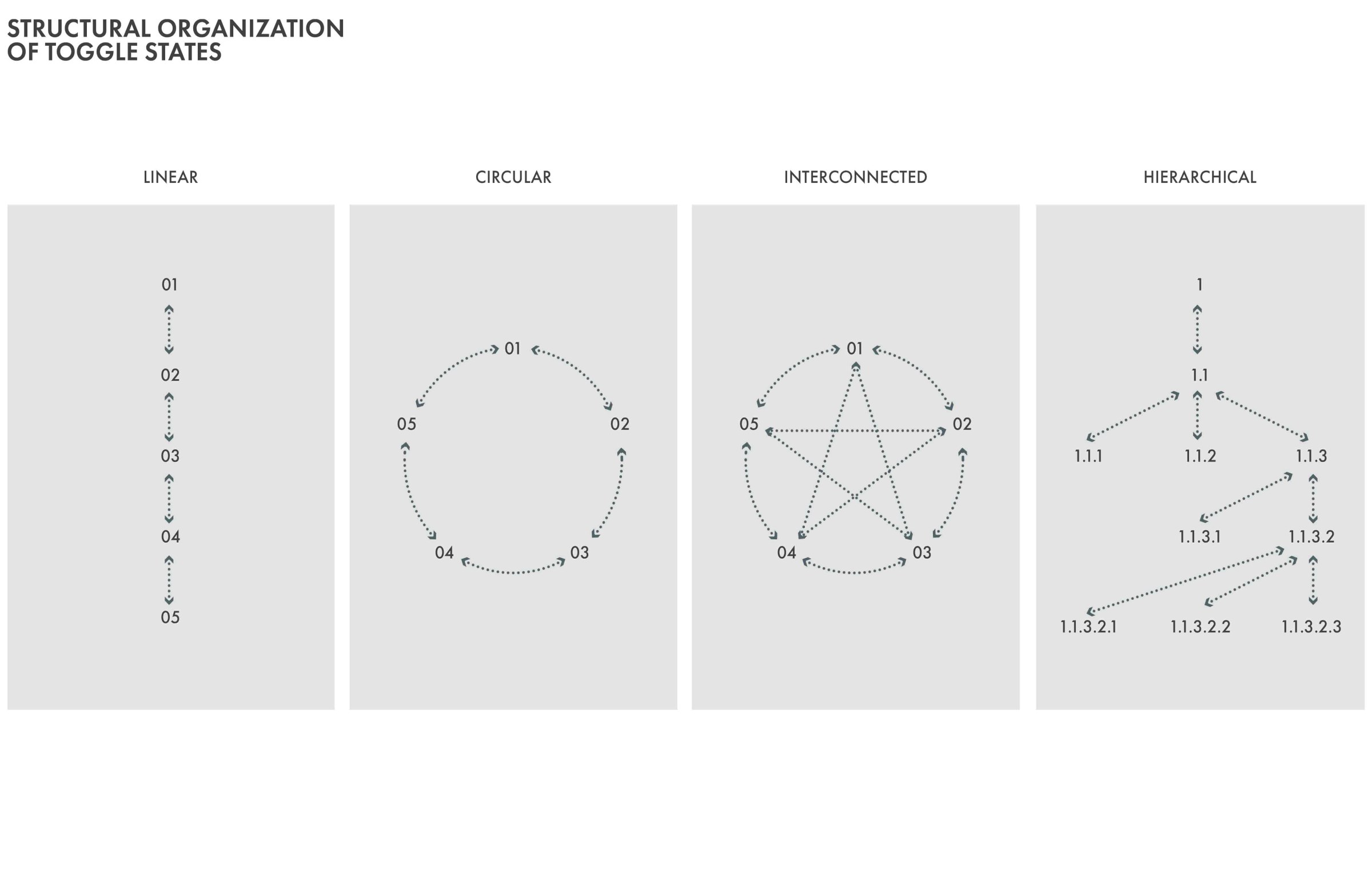Thesis Highlights
"ToggleState.on"
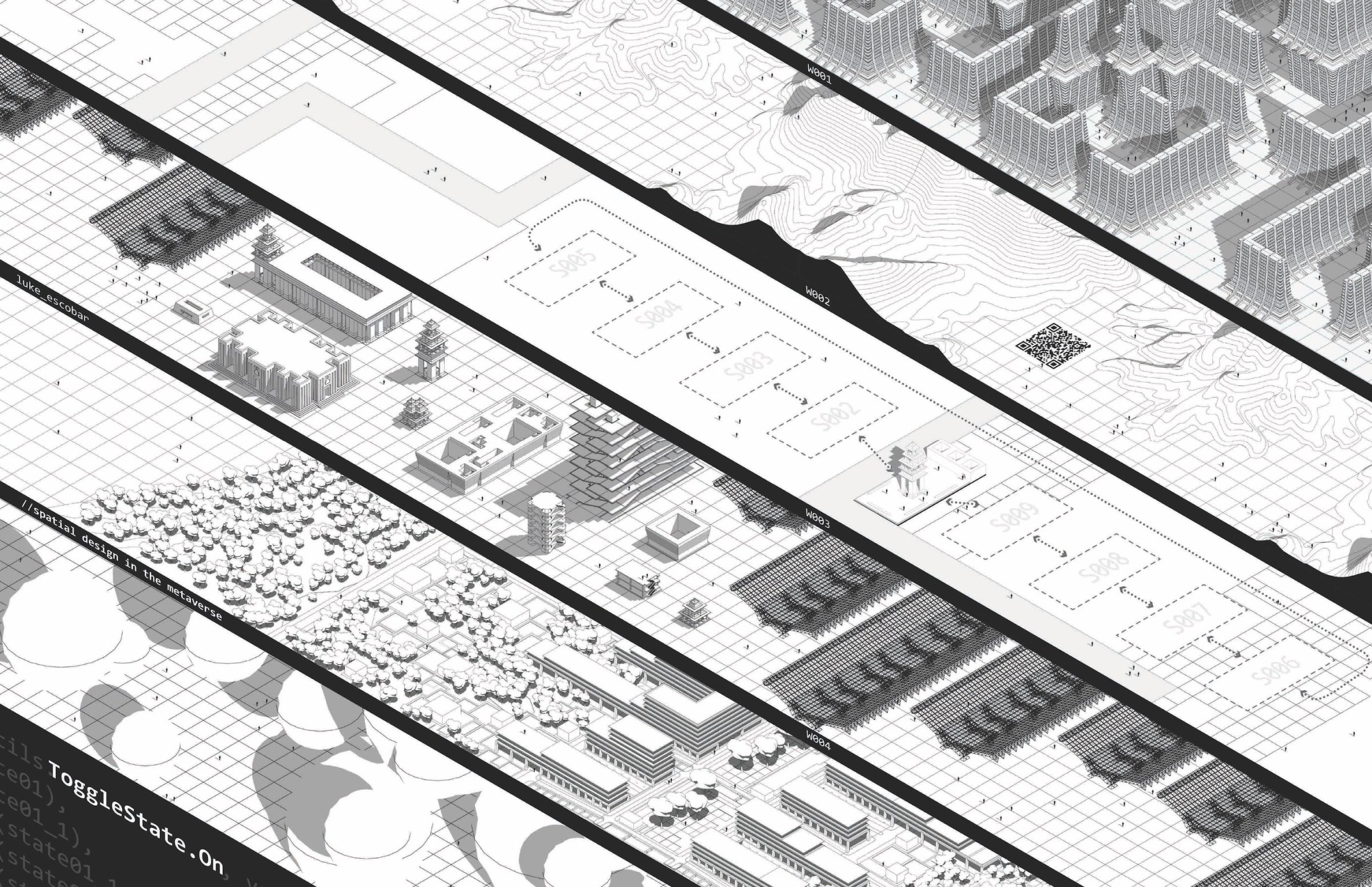
Luke Escobar, 2022
The development of metaverse platforms as a medium for consuming and sharing information has created a new virtual landscape and sparked an industry of 3D modelers, digital developers, and architects to fill it with content.
While there is no shortage of experimentation with geometric form within this virtual landscape, how designers organize space and design buildings remains unconsciously constrained by the laws and traditions of the physical world. Designing floor plans that sprawl outward horizontally and stack upward with floors vertically remains the default method of spatial organization in virtual environments.
This thesis explores an alternate method of spatial organization unique to and made possible by the virtual nature of the metaverse. Instead of sprawling outward or stacking upward, this thesis experiments with overlaying spaces on top of one another in a series of states which can be toggled on or off.
This method of spatial organization by state has two advantages. First, it allows designers to reuse the area and polygon budget of their site by a factor of infinity. Second, it divides scenes geometry into portions which are rendered one at a time instead of all at once, improving loading speed and user experience. These findings in spatial organization not only unlock the infinite potential of virtual land, but also introduce a new way of circulating space which can inform an architectural style specific to the emerging virtual landscape.
WORK
